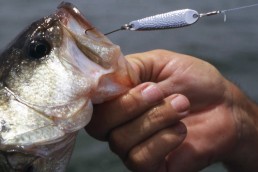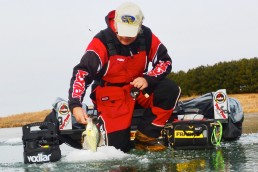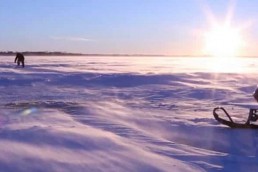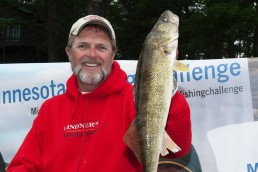Jigging Spoons in Winter
SHARE THIS POST
When you reach into your tackle box this month for a bass bait, I’ll bet you pick up a jig eight out of ten times. If you’d like to cast something different, you’re in luck.
Guide Jim Duckworth of Lebanon says, “Winter is the very best time for jigging a spoon. Once the water temp gets down to 55 degrees, it’s time to start jerking that spoon.”
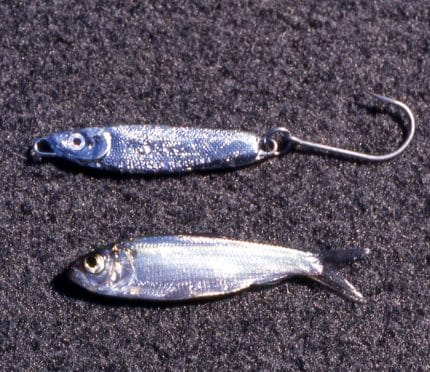 He says that jigging a spoon is largely a sonar game. “The first thing you want to do is get at the mouth of a major feeder creek and start idling back into the creek until you start marking schools of minnows. A high-quality sonar will make your job a lot easier. You need a unit that will clearly show individual fish in and around a school of shad. This is all-important.”
He says that jigging a spoon is largely a sonar game. “The first thing you want to do is get at the mouth of a major feeder creek and start idling back into the creek until you start marking schools of minnows. A high-quality sonar will make your job a lot easier. You need a unit that will clearly show individual fish in and around a school of shad. This is all-important.”
Jim adds that, when you’re idling and looking for minnows, there are certain things to watch for. A school of minnows with no fish around it is no good. A large school of minnows is also not the best thing either, although you can catch fish around the outside edges of these large schools. The ideal school is one about 10 feet by 10 feet in 20 to 40 feet of water next to the bottom, with larger fish in and around the school of baitfish. If you’ll take the time to find this combination, it can be heaven on earth.
The importance of feeling
“Now, when I jig a spoon most of my success is because of my equipment. The bite can be very subtle and extreme feel is necessary. I use a counterbalance on my handle to match the weight of my spoon. After all day jerking a spoon, you will appreciate a neutral rod tip. It also lets you feel the lightest of strikes.
“Next, you must use low-stretch line that is abrasion resistant. I use 20-pound-test Spiderwire to a swivel and then Vanish Transition line to the spoon about one foot long, then you’re ready to rock. You can’t jig a spoon in colored water with much success. It seems like the clearer the water, the better but the clearer the deeper, also.
Are you enjoying this post?
You can be among the first to get the latest info on where to go, what to use and how to use it!
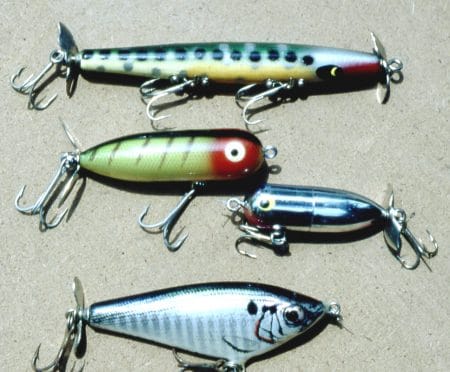 “Next, let’s talk spoons. Use as light a spoon as your skills allow. Most people like a one-ounce, I prefer no more than a 3/4- and I use a 1/2-ounce a lot depending on the depth. I doctor my spoons up with prism tape and fingernail polish. On a clear, sunny day (which is what you’ll want for jigging), a chartreuse spoon does the best for me with gold and silver as the backup lure. My favorite spoon is a Rattle Snakie spoon and it comes with prism tape and a built in rattler, I then put a bleeding bait Daiichi hook on and it’s ready to go.”
“Next, let’s talk spoons. Use as light a spoon as your skills allow. Most people like a one-ounce, I prefer no more than a 3/4- and I use a 1/2-ounce a lot depending on the depth. I doctor my spoons up with prism tape and fingernail polish. On a clear, sunny day (which is what you’ll want for jigging), a chartreuse spoon does the best for me with gold and silver as the backup lure. My favorite spoon is a Rattle Snakie spoon and it comes with prism tape and a built in rattler, I then put a bleeding bait Daiichi hook on and it’s ready to go.”
Once you have gotten all these factors together, drop your spoon vertically below the school of minnows. When you get to the desired depth or the bottom, give a sharp jerk of about one inch and let it fall back to the bottom on semi-slack line and be ready. Jim declares, “This is where you will love your balanced rod – it is almost effortless jigging, and, at the end of the day, you and your livewell will know it.”
Jim recommends that, if you’re catching spotted bass, take a few home, most lakes have plenty. On the other hand, you should release all your smallmouths and largemouths because populations are down in most lakes.
When you’re working the minnows, Jim says don’t spend more than 20 minutes on a school if the bass aren’t biting. Crank the big motor and go idling and find another school next to the bottom. It’s not unusual to fish 20 to 30 different schools a day.
Jim’s day of jigging this time of year begins about 10 a.m. and lasts through the afternoon. A lot of times, bass will come up late in the afternoon and you can cast one of or a Zara Spook or one of Jim’s to catch them on topwater for 30 minutes or so. He casts natural shad colors. Try firetiger, if they won’t hit the shad pattern.
Jim says, “May the fish be with you.”
MWO
SHARE THIS POST
Did you enjoy this post?
You can be among the first to get the latest info on where to go, what to use and how to use it!
Vernon Summerlin
For more than 30 years, Vernon Summerlin has produced outdoor articles and books that can be found on Amazon; most recently How to Analyze a Bass Hole: Think and Catch’em! He is the recipient of more than 40 awards for magazine and newspaper articles, TV, radio, photography and books.
